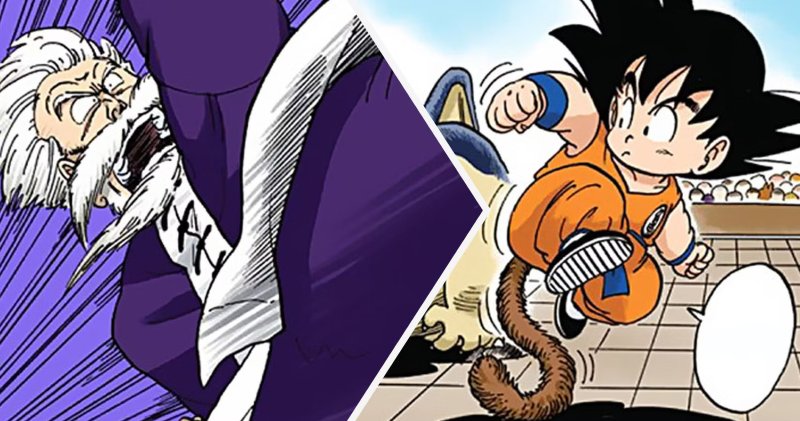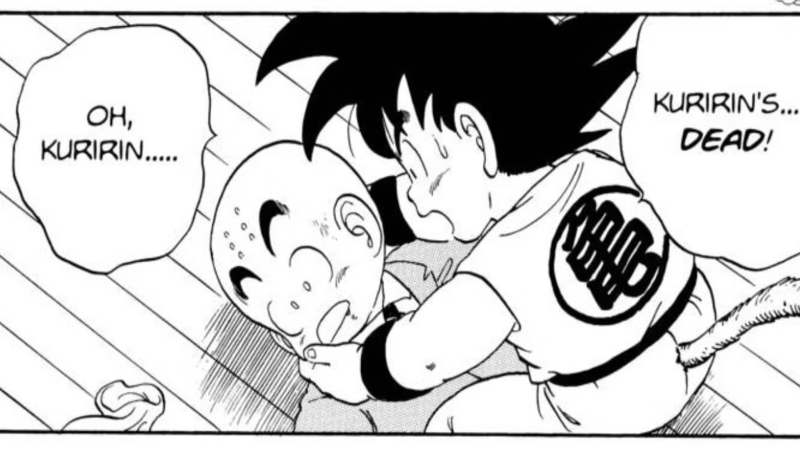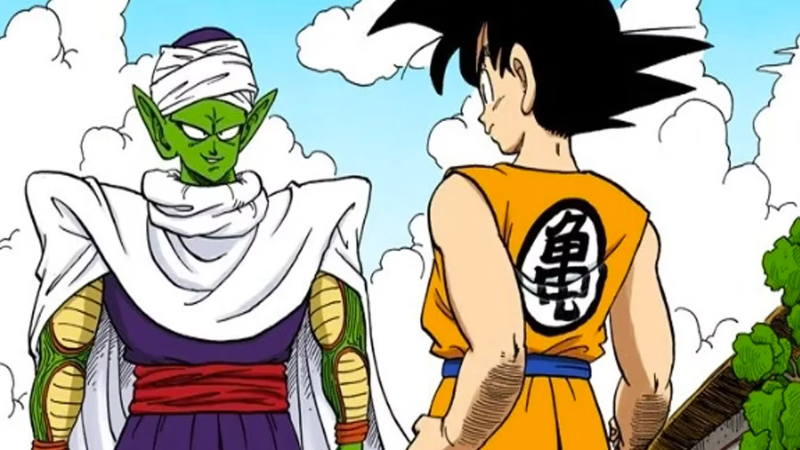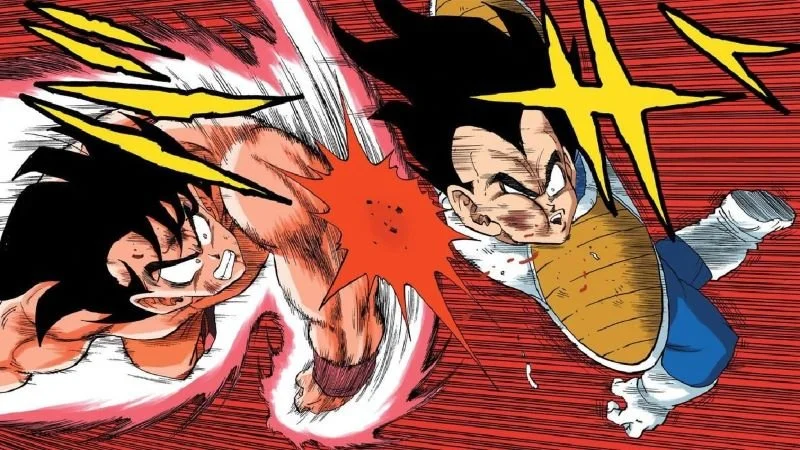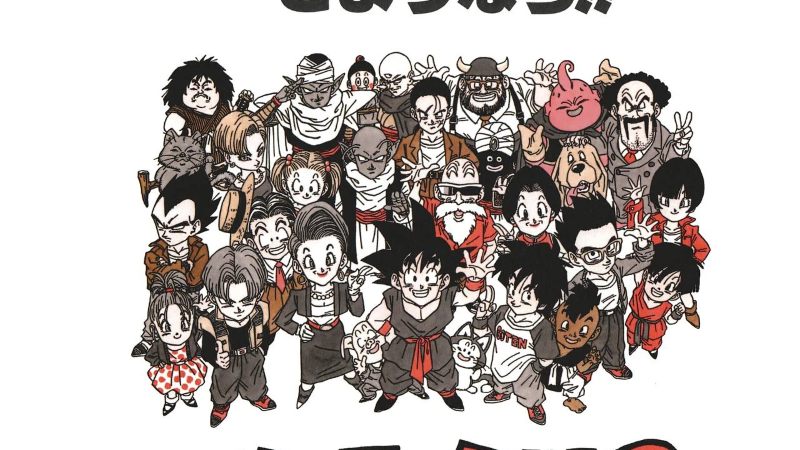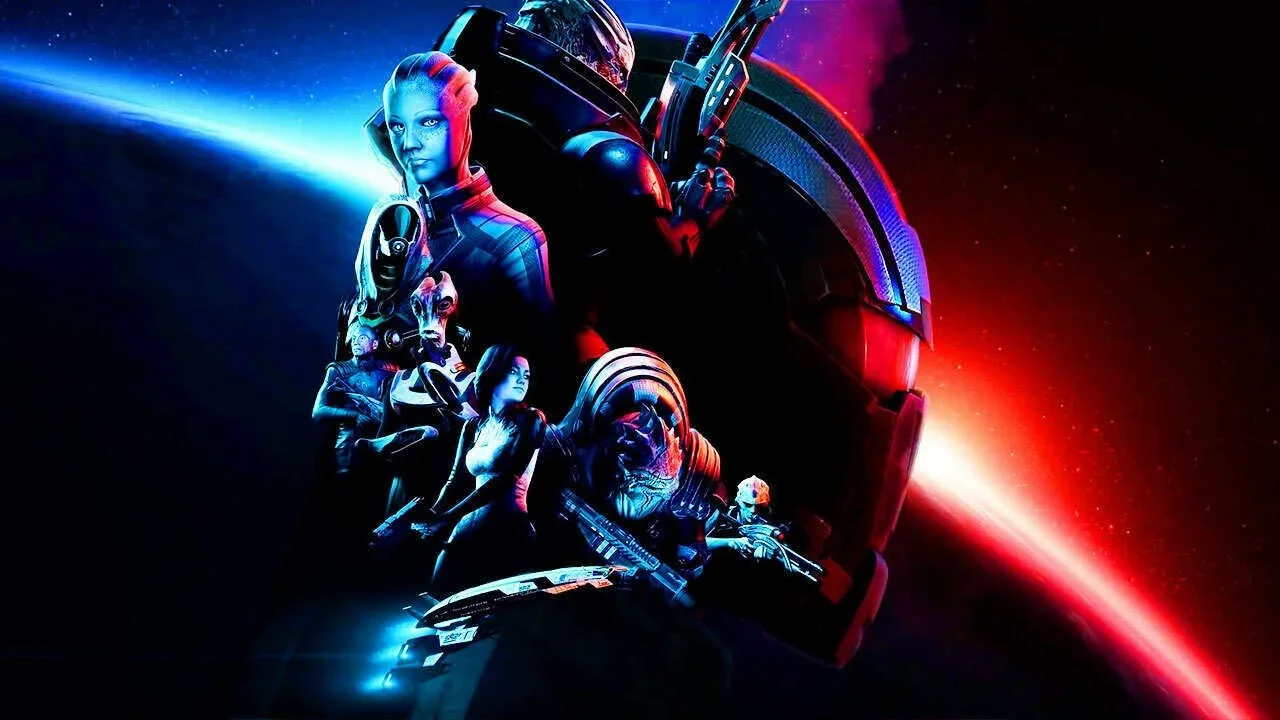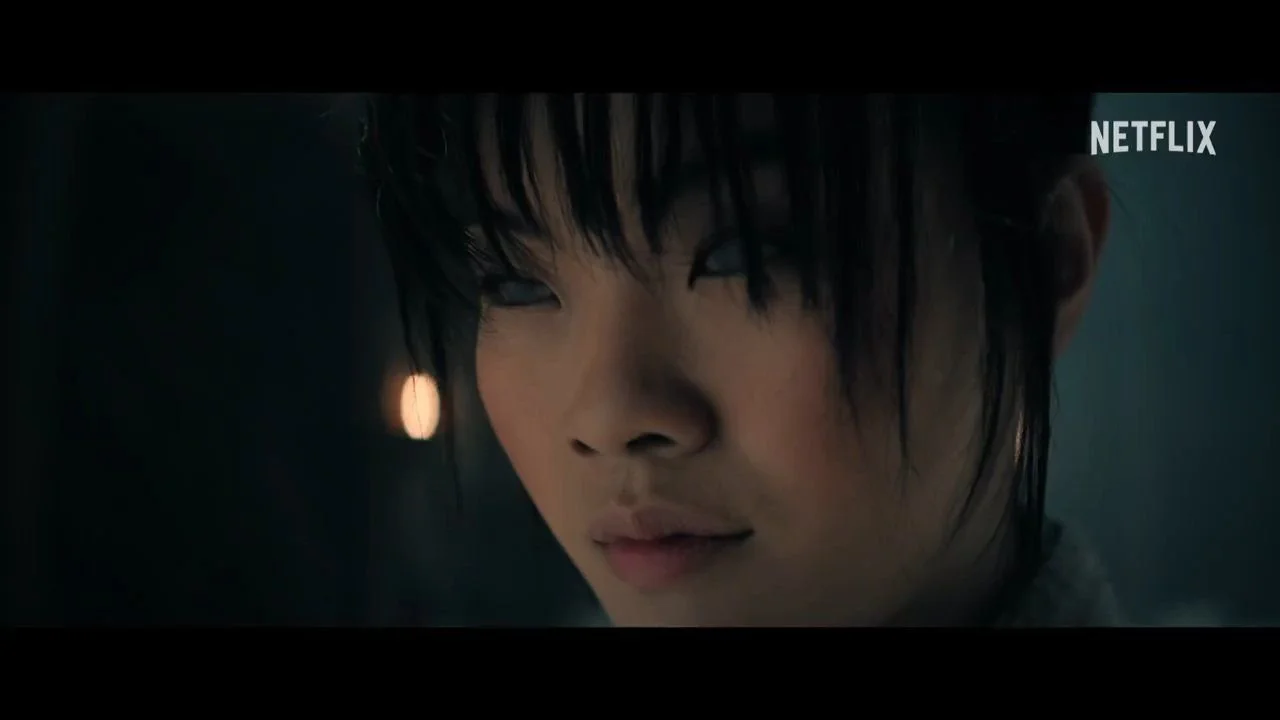The History Of The 'Dragon Ball' Manga
Image Source: The Escapist
May 9th is Gokū (and Piccolo) day! Okay, so we’re a bit late this year, but any day is a good day to celebrate Dragon Ball!
Dragon Ball has had a huge impact on pop culture. It all started with the work of one man: the late, great Akira Toriyama.
RELATED:
Let's take a look at the history of the original 1984 to 1995 Dragon Ball manga that started it all.
Image Source: IGN
The Road to Dragon Ball
Akira Toriyama began his manga career in 1977, when he entered his one shot Awawa World into the Monthly Young Jump Award contest, which is sponsored by publisher Shueisha. However, he did not win. This did not deter the young artist, and in 1978 with Mysterious Rain Jack. Toriyama once again did not win. In fact, this entry was disqualified due to its Star Wars parody elements. Despite this, he got a call from the editor of The Weekly Shonen Jump, Kazuhiko Torishima, telling him to not give up. This would end up being a good sign for Toriyama, as only a few months after that call, his first published manga, Wonder Island, was printed in the pages of Weekly Shonen Jump. It failed to catch on, but he had minor success with his next manga, Tomato, Girl Detective, in 1979. However, his first true look at success was just around the corner.
Image Source: List Fist
He had his first major success in 1980 with Dr. Slump. This manga revolves around Dr. Senbei Norimaki and his android daughter, Arale, as he has to deal with the hilarious hijinks caused by the robot girl. The manga ran from 1980 to 1984. It even got an anime adaptation by Toei Animation, which was broadcast on Fuji TV from 1981 to 1986. Toriyama founded Bird Studio in 1983, seeking independence. Towards the end of Dr. Slump's run, he was seeking a way to end it. However, he was only allowed to do so if he could create another hit to replace it. Thus, Toriyama began developing his next series.
Toriyama wanted to move away from Western influences and focus on a story with a more Eastern flair. Toriyama decided to use the Chinese folktale Journey to the West as a basis. The first was the two-chapter manga Dragon Boy. This manga focuses on a boy named Tangtong and his ragtag group of friends who go on a journey to Flower Country. The series shares several elements with the future Dragon Ball manga including its martial arts focus and its overall atmosphere. It also featured the first form of the Dragon Balls, though here, there are orbs that produce small dragons when hit with energy blasts as opposed to granting wishes. The other manga that can be seen as a prototype for Dragon Ball that Toriyama created during this time was The Adventures of Tongpoo. It focuses on a cyborg boy named Tongpoo who is sent from Earth in a spaceship called “Planet 12” to investigate alien planets. During one such expedition, he meets a girl named Pluma, who is the sole survivor of another scout ship called “Planet 8.” This manga features several elements that would later be used in Dragon Ball, most notably an early form of hoi-poi capsules. Tongpoo and Pluma also served as prototypes for Gokū and Bulma respectively. Toriyama would ultimately take elements from both short-lived mangas to create Dragon Ball.
Image Source: List Fist
The beginning of Dragon Ball
Dragon Ball was first published in the December 3rd, 1984 issue of Weekly Shonen Jump. The story was initially a loose adaptation of Journey to the West, even down to some of its characters. The monkey king Sun Wukong became the superstrong monkey-tailed boy Son Gokū, Tang Sanzang the wise monk became Bulma, Zhu Bajie "Pigsy" and Sha Wujing "Sandy" became Yamcha and Oolong, and the Bull Demon King and Princess Iron Fan became Gyumao (or "Ox King" in the English dub) and Gokū's future wife Chi-Chi. Instead of searching for the Buddhist sutras, Gokū and Bulma searched for the seven Dragon Balls. Son Gokū is along for the ride as protection, making sure Bulma doesn’t steal his four-star Dragon Ball (which was left to him by his “grandfather” Son Gohan), while Bulma is after a wish from the dragon Shen Long (or Shenron in the English dub).
However, the series was not quite popular when it was just getting started. In an attempt to bolster its popularity, Toriyama decided to focus more on the martial arts aspects of the manga by introducing a tournament: the Tenkaichi Budokai (or “World Martial Arts Tournament”). In this arc, Gokū is joined by his new master Kame Sen’nin (or “Master Roshi”) and a fellow pupil named Kuririn (or “Krillin”). These two were introduced to the story because Toriyama’s editor at the time, Kazuhiko Torishima, thought Gokū was “quite bland.” Another female character named Lunch (or Launch in the English dub) was also introduced around this time. Though she appears at first to just be a simple and sweet young girl, her personality changes into a tough and ruthless fighter whenever she sneezes.
Image Source: Comic Book Resource
This change in focus would prove popular for the series. The tournament arc proved rather popular with readers. Even Toriyama himself was looking forward to what would happen next, as he often wouldn’t plan too far ahead when writing. As the tournament went on, Gokū would come out victorious. However, Toriyama would subvert expectations by having Gokū lose to competitor Jackie Chun (who turned out to be Kame Sen’nin in disguise). This would begin a common theme in the franchise: there’s always someone stronger than you.
Torishima would constantly encourage Toriyama to put more fights in the manga and put more of a focus on action rather than adventure. However, he did try to return to the manga’s adventure routes with the following arc, the Red Ribbon Army arc (which even included a return to Penguin Village from Dr. Slump). However, fighting ultimately became the main theme of the manga.
Though action and fighting became the main focus, there was still a slight lighthearted tone to the overall manga. Things started to shift, however, during the 22nd Tenkaichi Budokai arc. A rival school to Kame Sen’nin’s Turtle School is introduced. This is the Crane School, headed by Tsuru Sen'nin (or Master Shen), and the students representing the school in the tournament are the three-eyed warrior Tenshinhan (or “Tien Shinhan” in the English dub) and the doll-like Chaozu (or Chiaotzu in the English dub). This tournament arc is the last to feature comedic slapstick elements, and it ends in a drastic way: with the death of Kuririn.
Image Source: Comic Book Resource
Kuririn’s death marked a major tonal shift in the series. Though the series had already seen character death before, this was the first time someone close to Gokū would be killed. Kurirn is killed by a demon named Tambourine, who turns out to be the henchman of another, more powerful demon, named Piccolo Daimao (or “Demon King Piccolo). Not only would Kuririn end up dying, but Kame Sen’nin and Chaozu end up being killed as well. They, along with Kuririn, are brought back with the Dragon Balls, though. The Piccolo Daimao arc would turn out to be the prototype for later arcs in the series that would focus primarily on one major villain. Though the stakes were high, Gokū would defeat Piccolo, but not before he would spit out the egg of his successor/reincarnation: Piccolo Jr.
Image Source: Comic Book Resource
This arc would be followed by yet another tournament arc, this time focusing on the 23rd Tenkaichi Budokai. However, this would feature a slightly different Gokū. No longer is he the monkey-tailed boy from the start of the series. Gokū is now a young adult. Each tournament arc thus far represents a three-year time skip. However, it wasn’t noticeable until this arc. Toriyama was adamant that Gokū grow up, even threatening to leave if Torishima didn’t let him age the warrior up. Torishima relented, and the boy became a man. Despite this, he still remained the goofy and somewhat dimwitted warrior he was as a boy.
Gokū’s age isn’t the only major plot device in this arc. The arc also reintroduces an old friend of Gokū: Gyūmaō’s daughter, Chi-Chi. She too enters the tournament and asks for Gokū’s hand in marriage, which turns out to be something he promised to her. Of course, Gokū being Gokū, he thought marriage was food, so he didn’t really know what he was getting himself into. Chi-Chi isn’t the only returning character, however. Piccolo also returns in the form of Piccolo Jr, and though there are several other fights in the tournament, it is this fight that ultimately becomes the focus of the arc. Unlike in previous tournaments, Gokū actually comes out as the victor. He marries Chi-Chi, and all is peaceful, for now at least.
Image Source: Reddit
The beginning of the “Z” era
By the end of this arc, the manga had already been adapted into an anime called Dragon Ball, which premiered on Fuji TV on February 26th, 1986. In the anime, the end of the Piccolo Jr arc marked the beginning of the Dragon Ball Z series. However, this was not the case in the manga. Even after the in-universe five-year time-skip, it still retained the Dragon Ball name. When the manga was published in America, however, the latter half of the manga was named Dragon Ball Z. Regardless of the name of this portion, it was clear that the series faced its biggest shift yet. For starters, Toriyama had a new editor: Yū Kondō. Many things have changed in the Dragon Ball world. Gokū and Chi-Chi now had a three/four-year-old son named Gohan. Chi-Chi didn’t think it necessary to train Gohan to become a fighter, so she had him focus on his studies. However, this peace would not remain, as an invader from outer space named Raditz landed on Earth, looking for Gokū, or as he knew him, Kakarot. The alien warrior would find Gokū and confront him, claiming to be his brother and that he was part of a warrior race known as the Saiyans.
The Saiyan arc would turn out to be another turning point for the series. It gave Gokū something of an origin and shed some of the series’ earlier mysticism. Piccolo and Kami (who at this point were revealed to be parts of the same being) were revealed to also be aliens known as Namekians. Perhaps the most shocking thing of all was the death of none other than Son Gokū. Though he would be resurrected with the Dragon Balls, this was a huge shock. Furthermore, it would be revealed that the Dragon Balls can only grant the same wish twice, adding some more tension to the plot. The Saiyan arc would mark a shift toward science fiction, and it would also introduce one of the biggest rivalries in all of the franchise: Gokū and Vegeta. We would also get a taste of techniques that seemingly transform Gokū, and this is shown through the Kaio-ken taught to him by Kaio-sama (or King Kai). Kaio-sama would also teach Gokū a technique that would become as iconic as the Kamehameha: the Genki Dama (or “Spirit Bomb”).
Image Source: Comic Book Resource
The following arc harkens back to the series’ adventure roots with a trip to Namek to resurrect their fallen friends (including Piccolo and Kami in order to bring back Earth’s Dragon Balls). However, this arc would also introduce a villain that seemingly set everything into motion: a galactic emperor named Freeza. Freeza is revealed to be the one who destroyed the Saiyans’ home planet of Vegeta, causing Gokū to be sent to Earth. This arc would also see the introduction of the Super Saiyan transformation, Once again, this major shift was triggered by the death of Kuririn. Interestingly, Toriyama decided to give this transformation blond hair so his assistant wouldn’t have to spend so much time coloring in Gokū’s long locks. It was during the latter half of the manga that Toriyama became more interested in the story than in the art, so shortcuts like this were becoming common. He would also get letters telling him his art was becoming “too square,” so he intentionally made it even more so. Since Dragon Ball was becoming an action manga, the overall quality of the art became less important to him. He focused on using it to convey the speed or intensity of the action.
Image Source: Comic Book Resource
The Beginning of the End
Toriyama was afraid he might not be able to outdo the Freeza arc. It was because of this that he struggled with the Android and Cell arcs. Toriyama also got a new editor towards the end of this arc: Fuyuto Takeda. At this point, the manga was becoming slightly formulaic, with this arc featuring a similar progression as the Freeza arc. Toriyama introduced time travel into the series with the introduction of Trunks, the son of Bulma and Vegeta, but he still had trouble coming up with plots for each week’s chapter. It appeared that Dragon Ball may have been reaching its end, and with the death of Gokū seeming permanent this time due to him already having been wished back to life with the Dragon Balls, it certainly felt like Cell’s death marked the end of the series.
However, Toriyama felt the series still couldn’t end, so he initially wanted Gokū’s son, Gohan, to take over as the main character. He ultimately decided that Gohan was not suited for the role even after the manga’s seven-year time skip, so he instead found a way to bring Gokū back. He also decided that this upcoming arc, the Majin Buu arc, would be the last, so he focused more on what he wanted to write, and what he wanted to write was comedy. He injected some comedy into the series with Gohan’s alter ego “the Great Saiyaman,” and it continued with the more childlike nature of Majin Buu. Gokū was brought back for yet another tournament, and he entered alongside his teenage son Gohan and his new son Goten, who had been born shortly after Gokū was killed. A new class of beings known as the Kaioshin (or Supreme Kai) enters the fray. Though some levity was brought back to the series, the stakes were raised to the highest they had ever been. A new technique is introduced, called fusion, that allows for two fighters to come together to form one superfighter. Gotenks is the first fusion, and this is also where Toriyama adds even more of his comedic stylings. Ultimately, not even these fused warriors would be enough, especially after Majin Buu’s evil side is expelled from him. This new Buu takes on several forms depending on who he absorbs. It gets to the point where nearly every character except for Gokū and Vegeta are dead (though Vegeta himself will also die during this arc as well). Nobody is safe. Toriyama was pulling all the stops, and he even had the world destroyed, bringing the fight to the planet of the Elder Kai. Though everyone is brought back, it ends up taking everyone’s energy (with the encouragement of the self-proclaimed savior of the world Mr. Satan) to form the Genki Dama that ultimately kills the final form of the evil Majin Buu, known as Kid Buu. Earth is once again safe. Toriyama ends the manga with an epilogue set 10 years later, setting up the next generation.
Image Source: Dragon Ball Wiki
The last chapter of the manga was published on June 5, 1995, with the last episode of the Dragon Ball Z anime airing a little less than a year later on January 31, 1996. Toriyama would take a break from writing long, serialized manga and instead focus on writing one-shots and his character design work. Dragon Ball has an immense impact on our culture that goes beyond its 11-year run in Weekly Shonen Jump. It popularized and redefined a whole new genre of manga, inspiring the likes of One Piece’s Eiichiro Oda and Naruto’s Masashi Kishimoto and beyond. The world of Dragon Ball has expanded beyond the initial 519 chapters of the original Dragon Ball manga, it is this incredible story that has inspired countless people and will continue to touch the lives of its readers, and it’s all thanks to the hard work and dedication of one man: Akira Toriyama.
READ NEXT:






